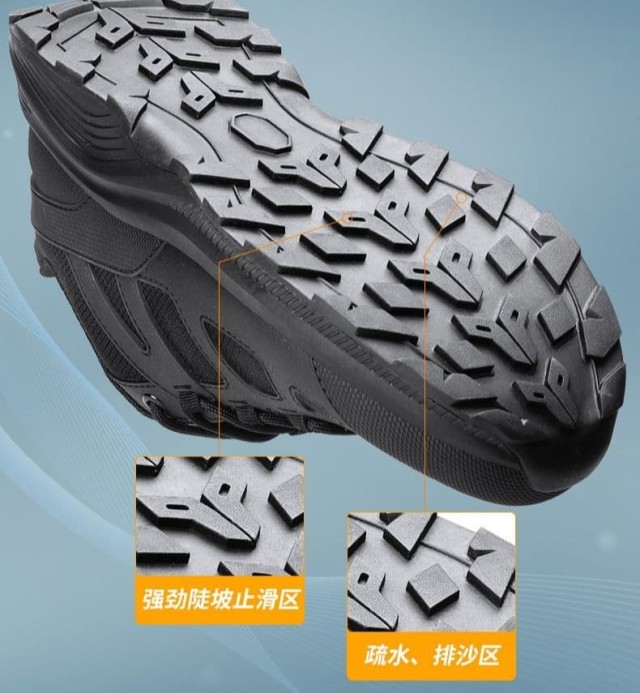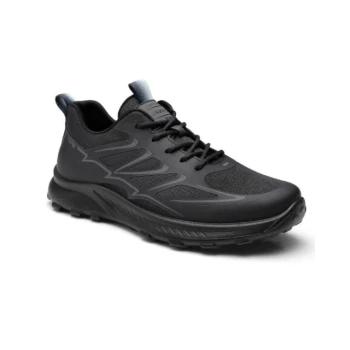Abrasion resistance isn’t just about durability—it’s a critical factor in workplace safety, cost efficiency, and long-term comfort. Whether you’re evaluating boots for mining, construction, or outdoor activities, understanding the interplay of materials and construction techniques ensures you invest in footwear that withstands real-world demands.
Why Abrasion Resistance Matters Beyond Basic Durability
Abrasion-resistant boots reduce injury risks and replacement costs. Research shows industries like construction, mining, and healthcare face high rates of footwear wear-and-tear, often leading to slips, cuts, or exposure to hazardous materials. Boots that resist abrasion:
- Extend lifespan: High-quality materials can last years, even under heavy use.
- Improve safety: Meet standards like ASTM F-2913 (requiring a 0.40+ friction coefficient on slippery surfaces).
- Reduce downtime: Fewer replacements mean fewer interruptions.
Consider this: A single pair of abrasion-resistant boots might cost more upfront but save thousands in long-term replacements.
The Role of Material Engineering in Modern Work Boots
Full-Grain Leather vs. Synthetics
- Full-grain leather: Naturally dense fibers offer unmatched durability and mold to feet over time. Ideal for heavy industries, these boots withstand rough surfaces and provide inherent water resistance when treated.
- Synthetics: Lightweight and often enhanced with coatings (e.g., polyurethane), synthetic boots resist chemicals and moisture but may degrade faster under constant friction.
Key Insight: Full-grain leather excels in long-term abrasion resistance, while synthetics prioritize lightweight flexibility.
How Boot Construction Techniques Amplify Longevity
Stitching vs. Cementing
- Goodyear welting: Reinforced stitching prevents sole separation, critical for abrasive environments.
- Direct-attach soles: Cemented construction reduces weight but may weaken under repeated stress.
Reinforcements
- Toe caps and heel counters: Add layers of protection in high-wear zones.
- Multi-density outsoles: Softer compounds grip surfaces; harder layers resist grinding.
Pro Tip: Look for boots with SATRA-tested slip resistance (e.g., treads designed for wet/oily quarry tiles).
Selecting Abrasion-Resistant Boots for Your Industry
Case Studies: Mining vs. Construction vs. Hiking
| Industry | Primary Threats | Ideal Boot Features |
|---|---|---|
| Mining | Rocks, chemicals, moisture | Full-grain leather, steel toes, chemical-resistant soles |
| Construction | Concrete, rebar, debris | Stitched soles, puncture-resistant midsoles |
| Hiking | Trails, uneven terrain | Lightweight synthetics, Vibram® outsoles |
Balancing Abrasion Resistance with Comfort and Weight
- Trade-offs: Heavier materials (e.g., leather) offer durability but may fatigue feet over long shifts.
- Solutions: Look for boots with cushioned insoles and ergonomic designs that distribute weight evenly.
Final Considerations: Matching Boots to Your Needs
Ask yourself:
- How often will the boots face abrasive surfaces?
- Do I need chemical or water resistance?
- Is long-term cost savings worth a higher initial investment?
For bulk buyers and distributors, partnering with a manufacturer like 3515 ensures access to a full range of abrasion-resistant footwear tailored to industrial needs—from reinforced leather boots to lightweight synthetics.
Ready to equip your team with boots that last? Explore 3515’s customizable solutions for durability that stands up to your industry’s demands.
Related Products
- Safety Footwear Wholesale Manufacturer for Custom OEM/ODM Production
- Wholesale Durable Breathable Safety Boots Custom OEM Manufacturer
- Durable Rubber-Soled Utility Shoes for Wholesale & Custom Brand Manufacturing
- Wholesale Safety Footwear Manufacturer for Bulk & Custom OEM Orders
- Wholesale Customizable Safety Boots Durable & Protective Footwear Manufacturing
Related Articles
- How Steel Toe Shoes Prevent Injuries: The Science Behind Workplace Safety
- Steel Toe Work Boots: Balancing Safety and Comfort for Demanding Jobs
- How Steel Toe Boots Deliver Financial and Safety Returns in High-Risk Workplaces
- How Steel Toe Shoes Meet Safety Standards and Prevent Workplace Injuries
- Matching Men’s Work Shoe Safety Technologies to Workplace Hazards




















